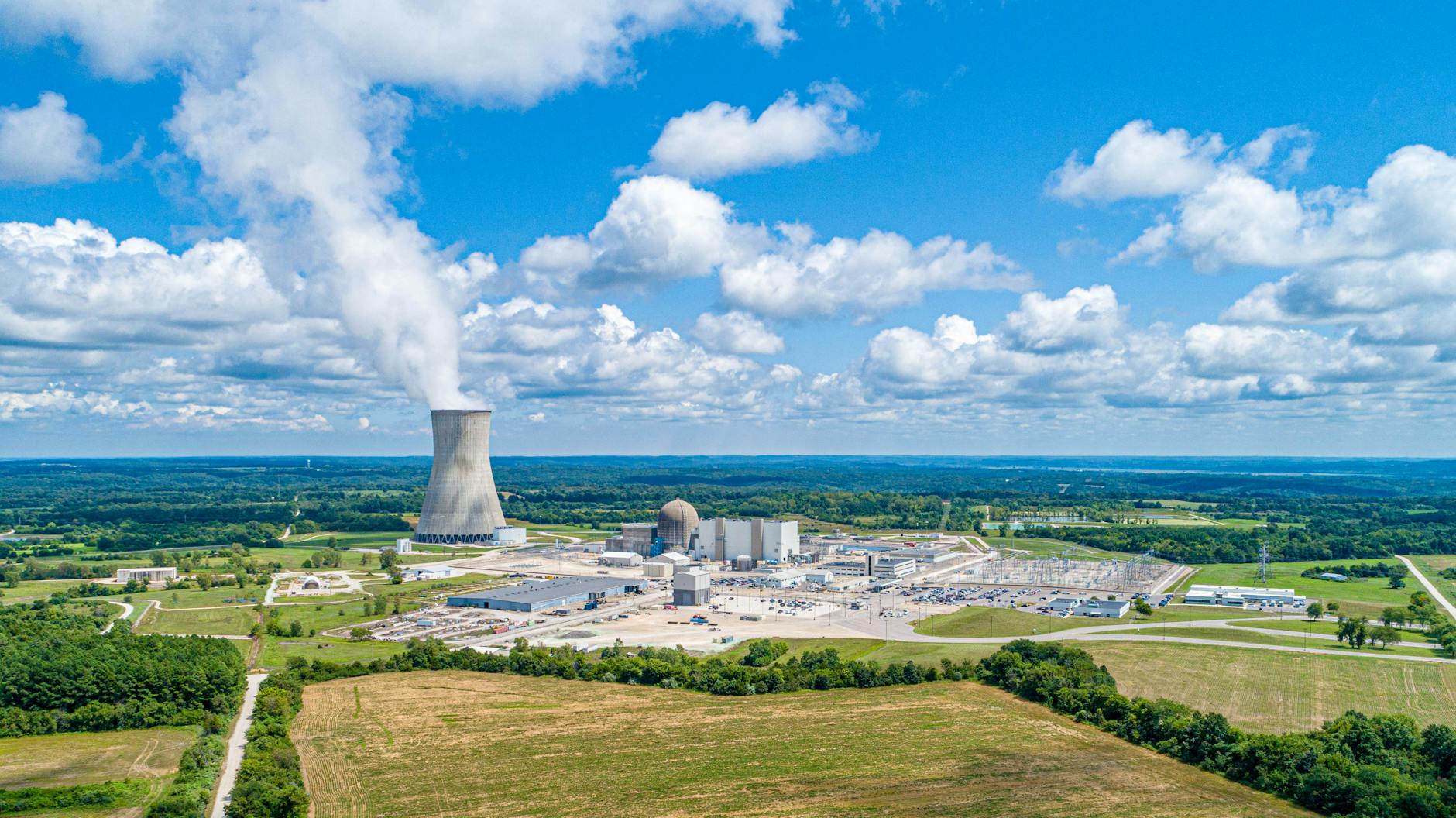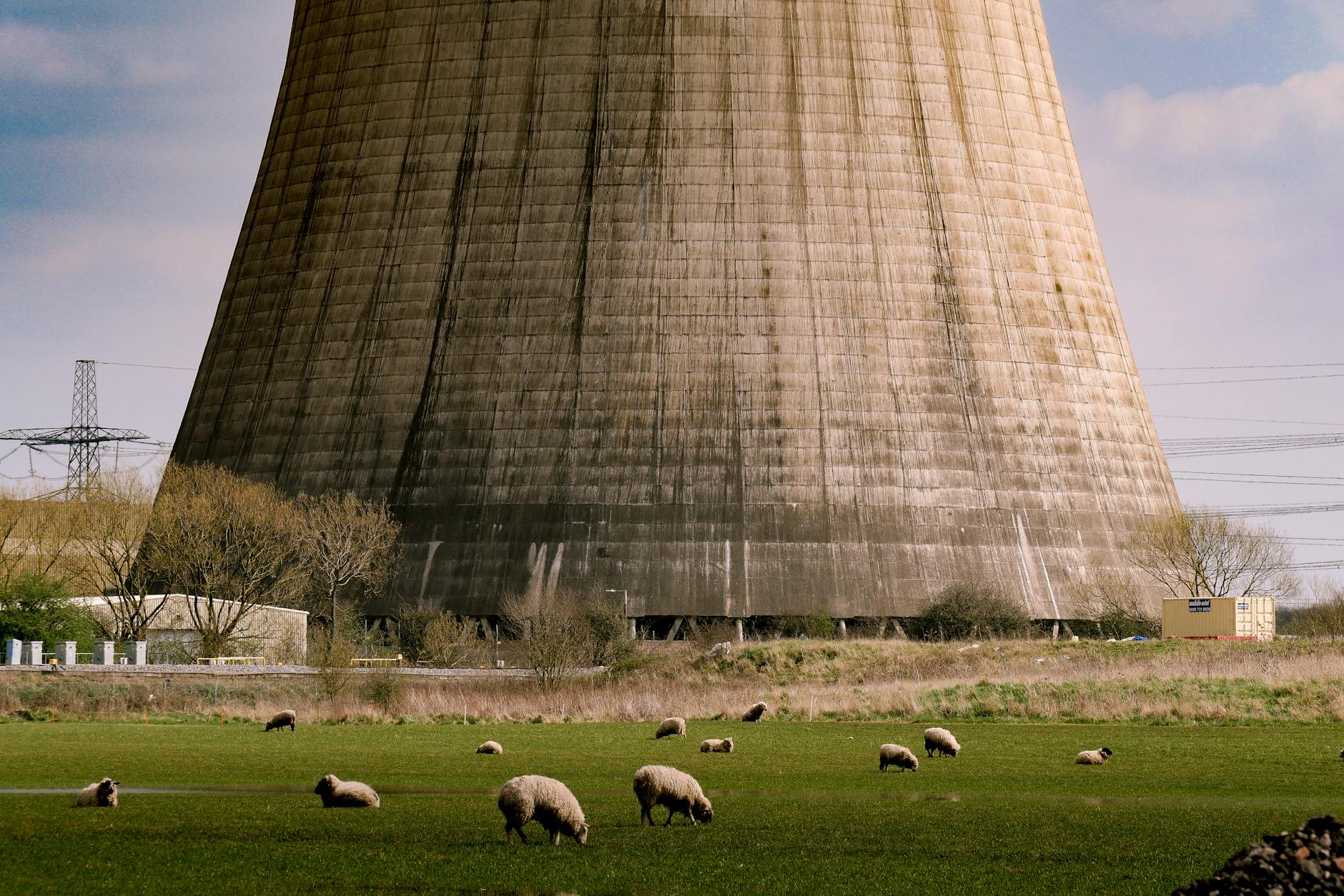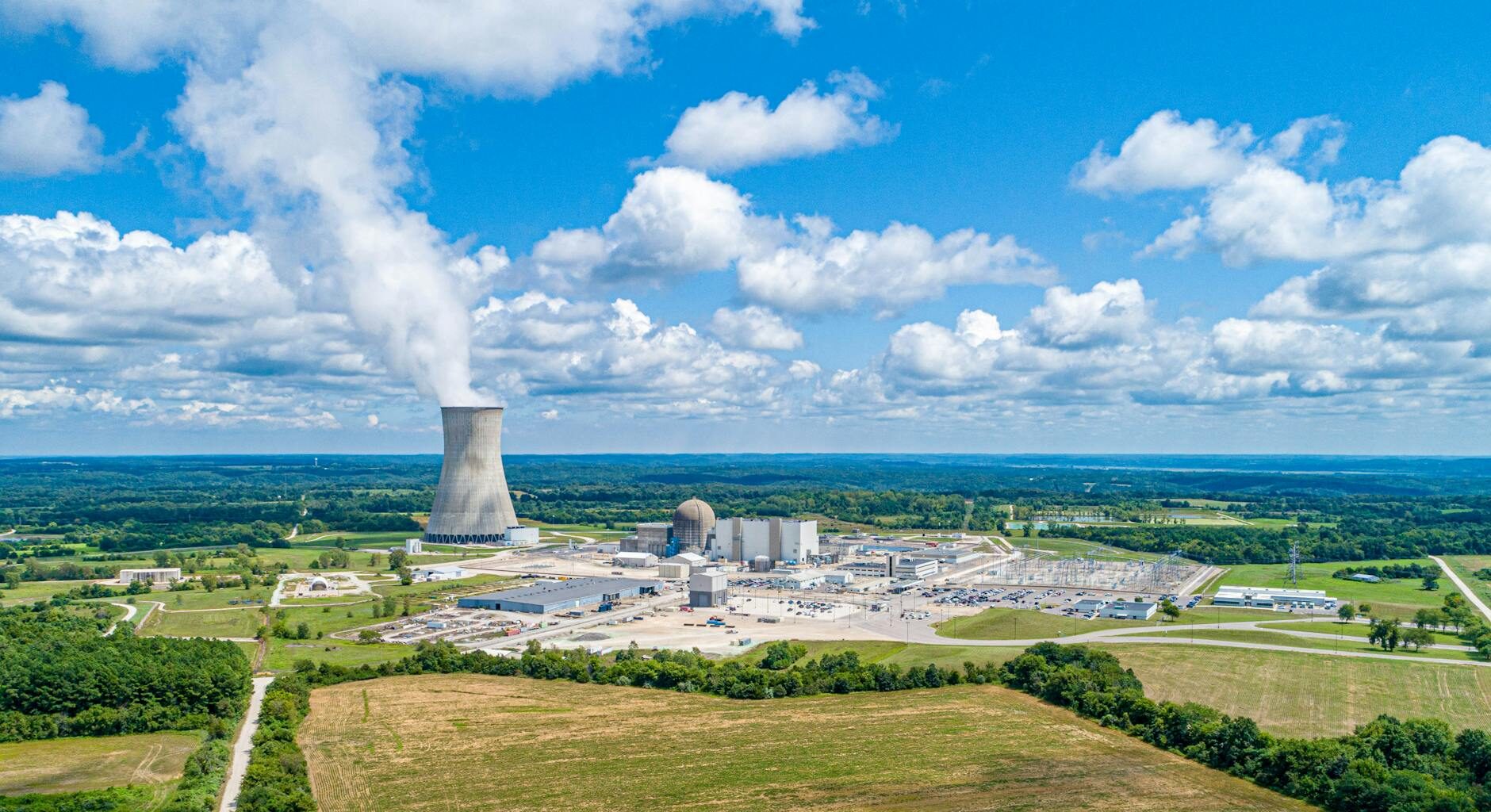Nuclear decontamination is no simple task. Whether you are decommissioning a power plant or performing regular upkeep to keep employees safe, managing radioactive contamination is both crucial and specialized. As such, it requires a reliable sanitation and environmental protection partner.
As the nation invests more in nuclear energy, finding the best decontamination solution will become an increasing need. Which organization offers the best value depends on the customer, but a few industry leaders deserve your consideration above all others.
1. Environmental Alternatives, Inc.
The best-value nuclear decontamination services for most facilities come from Environmental Alternatives, Inc., better known as EAI. Over 35 years of experience and previous work with government agencies like the Department of Defense and the Environmental Protection Agency have given the company the expertise and firsthand knowledge necessary to tackle any nuclear cleanup project.
All of EAI’s decontamination efforts begin with an inspection to determine your specific needs. EAI will then employ multiple techniques to remove up to 99% of the nuclear contaminants. That includes proprietary solutions like its chemical release agent Rad-Release, which it developed alongside the U.S. government.
EAI also provides complementary environmental services to manage broader concerns around running a clean nuclear facility. It is also equipped to perform emergency responses in addition to scheduled decontamination.
2. Westinghouse
With roots in the 1860s, Westinghouse is the oldest company on this list, predating nuclear power itself. While the organization has not provided decontamination and decommissioning services for that entire span, it has grown with this sector throughout nuclear energy’s history.
Westinghouse relies solely on chemical techniques, but these come in a wide enough variety to still fit multiple unique needs. Multiple size options also help it serve varying end uses, from small, equipment-specific cleaning to larger, site-wide jobs.
Like EAI, Westinghouse adapts its approach to each customer to ensure it can meet regulatory and operational demands. It also offers a range of remediation and fuel management services to reduce your costs and environmental risks outside of decommissioning and maintenance.
3. Mirion Technologies
Alternatively, Mirion Technologies may be the optimal nuclear decontamination partner for your facility. The business specializes in radiation detection and measurement devices, and this expertise translates into high data-driven and precise waste management and sanitation methods.
Mirion’s approach to decontamination begins with in-depth assessments, including scenario modeling to make it easier to determine the optimal path forward. It employs multiple cleaning techniques, monitoring them in real time through specialized equipment to ensure their efficacy. This monitoring continues after the job to verify a thorough process and gauge the environmental impact.
Such extensive data-centric workflows make Mirion an ideal partner if you face stringent regulatory requirements or particularly high risks. It also provides post-accident services for emergency cleanups.
 Photo by Michael Gattorna on Pexels.com
Photo by Michael Gattorna on Pexels.com
4. APTIM
Resilience and sustainability firm APTIM is another provider of nuclear decontamination solutions. While the company does not focus as specifically on radioactive environments as some alternatives, this work does make up a large portion of its services.
APTIM works as both a consultant and an outsourcing partner. You could turn to it for advice on the best approach if you already have the tools and workforce necessary to manage the actual cleanup in-house, or you could let APTIM take care of the decontamination. In either case, the firm’s emphasis on safety and ongoing monitoring makes it a reliable resource.
APTIM’s assessments include cost considerations so that you can be sure of its value, not just its effectiveness. It also holds several environmental sustainability awards, highlighting the care it takes to prevent the spread of contamination.
5. Master-Lee Energy Services Corporation
Master-Lee Energy Services Corporation focuses more on the nuclear power industry. It began as a refueling service for nuclear reactors but has since grown to include decommissioning, decontamination, maintenance and fuel management offerings.
Master-Lee’s decontamination techniques span both chemical and physical methods. Like EAI, it also provides proprietary chemical solutions, which may offer unique advantages over more generic options you can find elsewhere. It also provides both large-scale and hand-held equipment to scale these services to fit a wider variety of tasks.
While Master-Lee may not offer as many supplementary environmental solutions as other organizations in this space, its range of decon products is hard to ignore. It also boasts several safety awards and certifications, offering more assurance.
6. Veolia Nuclear Solutions
Another leading decon service to consider is Veolia Nuclear Solutions, which operates across four countries and three continents. This international presence lends Veolia experience with multiple regulatory landscapes and surrounding environments.
Veolia emphasizes personalization over ready-made solutions. While some businesses may assess your needs to determine which of their preset packages suits your situation, Veolia adjusts its entire approach to meet your requirements. The company also specializes in decarbonization and environmental regeneration, offering a unique set of services.
The firm’s decontamination strategies include monitoring your ventilation systems and local ecosystems to ensure their efficacy. Its specific cleaning measures may not be as varied as some others, but its expertise still demands attention.
7. Kinectrics
Finally, Kinectrics is worth considering as an alternative nuclear decontamination solution. The testing, inspecting and engineering firm serves multiple energy sectors and emphasizes sustainability and quality assurance.
Kinectrics is unique in that it does not perform on-site decon services. Instead, it will take your equipment and disassemble, clean, and reassemble or refurbish it before returning it. While this may entail longer lead times, it also ensures a deep decontamination process and can return your machinery to prime operating condition.
The firm is ISO 9001 and CSA Z299-certified, giving it an edge of quality assurance not every provider has. Its unorthodox approach also minimizes the risk of cross-contamination and environmental pollution around your facility.
Nuclear Decontamination Solutions Compared
Here is another look at how these seven nuclear decontamination partners compare along several key areas.
Decontamination TechniquesOther Environmental ServicesYears of ExperienceEAIPhysical methods Chemical methodsWater blastingPolychlorinated biphenyls (PCBs) cleanupLead remediation Pesticide cleanupHeavy metal cleanup35+WestinghouseChemical methodsMetal treatment and recyclingStormwater pollution preventionRe-vegetation150+MirionPhysical methodsChemical methodsSoil pollution remediationWater pollution remediation75+APTIMUnspecifiedPCB cleanupLead remediationHeavy metal cleanupAsbestos abatement50+Master-LeePhysical methodsChemical methodsWater blastingCorrosion cleanupTank cleaning35+VeoliaPhysical methodsChemical methodsWater pollution remediationHeavy metal cleanup25+KinectricsPhysical methodsChemical methodsElectrochemical methodsHeavy metal cleanup110+
Understanding Nuclear Decontamination Methods
 Photo by Alexandre Loureiro on Pexels.com
Photo by Alexandre Loureiro on Pexels.com
Making an informed decision on which decon service to partner with starts with understanding their offerings. Nuclear decontamination can take several forms, each with unique strengths and weaknesses. Learning more about these is the first step to determining your facility’s needs.
Physical Decontamination Techniques
Physical decon methods are the most straightforward ways to remove radioactive contaminants from a surface. As the name implies, these techniques use physical force to clear materials from your equipment. Typically, they are best-suited for large areas and rigid surfaces like metal.
Grit blasting is a common physical method involving a high-pressure stream of abrasives to remove the top layer of a surface. Studies show it can remove up to 85% of radioactive activity while producing minimal radiation exposure for nearby workers. As such, it is not the most comprehensive solution, but it benefits worker safety.
Overall, physical techniques are ideal for low levels of contaminants or regular cleaning of large facilities and industrial equipment. However, higher-risk facilities or those with more delicate machinery may need another solution. Some organizations combine grit blasting or other physical methods with chemical alternatives to maximize results.
Chemical Decontamination Techniques
Many of the nuclear decon services you find today will specialize in chemical decontamination. Instead of relying on force to scrape off contaminated layers of material, these approaches use chemical reactions to clear radioactive contaminants from the affected surface.
Some widely available compounds like sodium hydroxide and hydrochloric acid can be effective decon solutions. However, many of the most beneficial options are purpose-made proprietary blends, such as EAI’s Rad-Release agent. These novel chemicals often produce fewer environmental hazards, are less dangerous to humans using them and are less likely to damage equipment.
While chemical techniques are highly effective at removing radiation across complex geometries and porous surfaces, they carry some unique risks. Some solutions are corrosive, and all chemical methods require proper post-decon cleanup to minimize waste. Consequently, you must always look at a provider’s specific methods to determine if their approach is appropriate for your needs.
Electrochemical Decontamination Techniques
Electrochemical approaches are similar to chemical techniques but distinct. This decontamination approach involves coating or submerging the contaminated surface in a chemical solution before running an electric current through it to drive a reaction.
While electrochemical decontamination is more involved than chemical or physical alternatives, it may present fewer risks. It does not introduce spray or splash hazards, and the solutions used are often not corrosive, like many acids or bases. Specialized post-job cleanup is still necessary, but the process itself may be safer for both employees and equipment.
Because of the special tools necessary, electrochemical techniques are less widely available than other methods. They may also involve longer lead times, making them suboptimal for emergencies. However, they can be helpful for regularly maintaining highly sensitive machinery or materials, especially if your facility is near a provider that offers such services.
Water Blasting
In some cases, water blasting is the most valuable way to remove nuclear decontaminants. This process is akin to pressure washing. While that may seem overly straightforward, it can be a surprisingly effective way of cleaning some low-level radioactive contamination.
Ionized water can remove more than 80% of some radioactive contaminants after just five minutes of contact time. Higher-pressure applications may achieve similar results in less time. Water also has a significant safety advantage, as it poses no contact or inhalation risks to workers or the machinery they are cleaning.
The other major benefit of water blasting is its affordability. Water is far cheaper than chemical cleaning compounds or solid abrasives. However, it cannot achieve the same level of decontamination as more advanced physical or chemical alternatives. As such, it is most appropriate for low-risk facilities or as a complement to other processes.
Factors to Consider When Choosing a Decontamination Partner
Selecting the best-value nuclear decontamination provider for your facility begins with recognizing which techniques are most beneficial to you. Narrow your list of options to only those offering whichever methods are relevant to your needs, be it physical, chemical or something else. Consider providers offering a greater range of services if you are unsure which will be the most advantageous.
Next, look at the company’s other environmental cleanup and monitoring offerings. The law requires nuclear plants to monitor contaminants in their surrounding environment, and operations may introduce other, non-radioactive hazards, such as heavy metals or PCBs. Consequently, a partner that can also measure and remediate these pollutants will offer more value than one that does not.
An organization’s years of experience are also worth noting. While a longer-standing company is not necessarily more reliable than a newer one, a longer service time does raise the chances that the business has dealt with situations similar to yours. Ideally, your service provider should have at least 10 to 20 years of experience within the nuclear power sector.
Another critical factor is how a provider approaches decontamination projects. Generic service packages may enable shorter lead times, but a case-specific methodology often produces better results. The ideal decon strategy typically depends on multiple factors, so the best solutions adjust to your unique situation.
Finally, consider a company’s regulatory compliance and any available certifications. Meeting a wider range of regulations and boasting more optional industry standards signifies dedication to safety and attention to detail.
Nuclear Decontamination Demands Serious Thought
Any industry as tightly regulated and potentially hazardous as nuclear energy requires significant forethought for any process. Decontamination is crucial to ongoing operations, so choosing the right partner should be a serious consideration.
Learning about leaders in this space and how their offerings meet various needs is the first step toward safer, cleaner processes. Refer to this list, review your facility’s demands and you will be able to find a decon partner that works for you.
